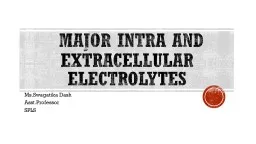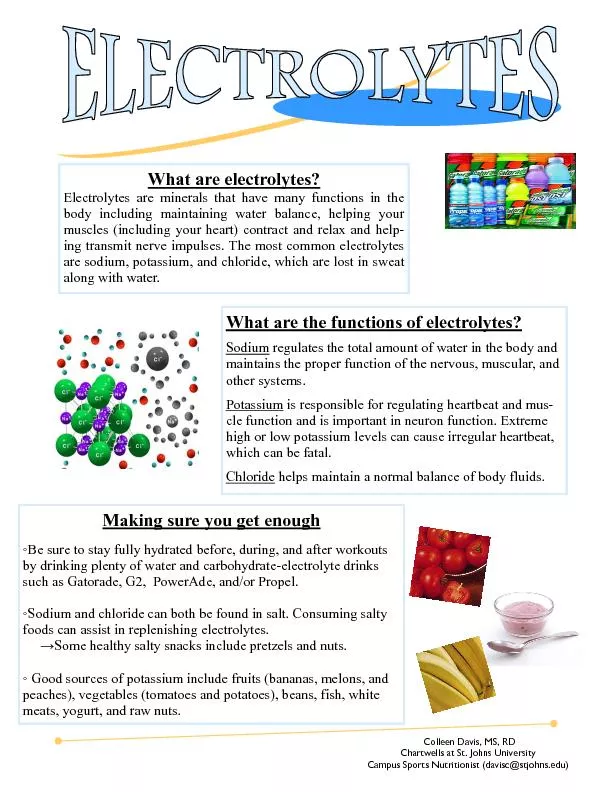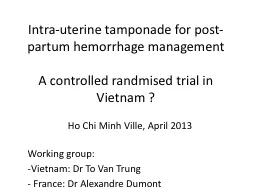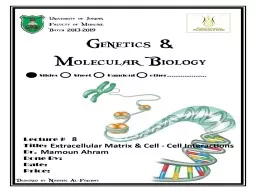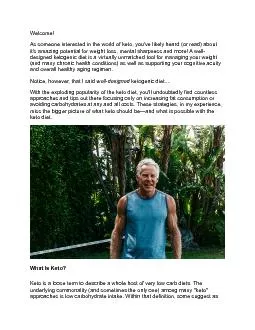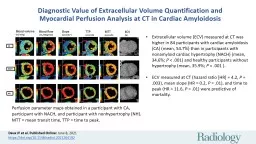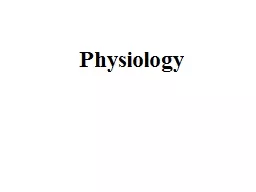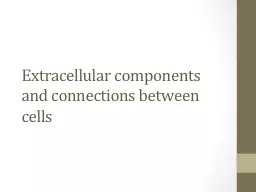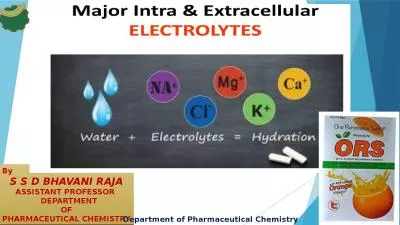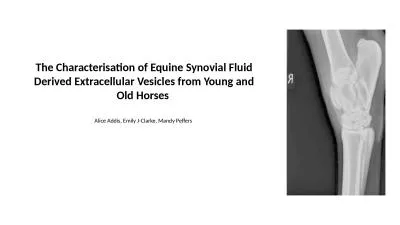PPT-Major Intra and Extracellular Electrolytes
Author : mia | Published Date : 2022-04-07
MsSwagatika Dash AsstProfessor SPLS definition There are various inorganic and organic compounds present in the body fluids and the concentration of these in various
Presentation Embed Code
Download Presentation
Download Presentation The PPT/PDF document "Major Intra and Extracellular Electrolyt..." is the property of its rightful owner. Permission is granted to download and print the materials on this website for personal, non-commercial use only, and to display it on your personal computer provided you do not modify the materials and that you retain all copyright notices contained in the materials. By downloading content from our website, you accept the terms of this agreement.
Major Intra and Extracellular Electrolytes: Transcript
MsSwagatika Dash AsstProfessor SPLS definition There are various inorganic and organic compounds present in the body fluids and the concentration of these in various compartments is balanced in such a way that the body cells and tissue always have the same environment. Electromaterials. Science. Professor Doug MacFarlane FAA FTSE. . ARC Federation Fellow. . School of Chemistry Monash University. Electromaterials. Science. Artificial. Photosynthesis. Energy Generation. Electrolytes are minerals that have many functions in the body including maintaining water balance, helping your muscles (including your heart) contract and relax and help- ing transmit nerve impuls 2.INTRA-PERSONALSPACEMODELING2.1.Intra-PersonalSpace(IPS)Inthispaper,weareonlyinterestedintestingthegeneral-izationcapabilityofouralgorithm.Itisourhopethatthetrainingstagecanlearntheintrinsiccharacter . tamponade. for post-partum . hemorrhage. management. A . controlled. . randmised. trial in Vietnam . ?. Ho Chi Minh Ville, . April . 2013. Working. group. :. Vietnam: Dr To Van Trung. - France: Dr Alexandre Dumont. Chemistry in Aqueous Solution. Types of Electrolytes. Strong : Completely dissociated (break into ions). Weak : Partially dissociate. Non : No dissociation occurs. Examples of Electrolytes. Strong: Soluble Ionic Compounds. Vivek Bhalla, MD. Division of Nephrology. Stanford University School of Medicine. August . 28th. , . 2015. Anatomy of the Renal Block. Physiology. Pathophysiology. Urology. Body. Fluids -1. Glomerular. Dr. Mamoun Ahram. Faculty of Medicine. Second year, Second semester, 2014-2014. Principles of Genetics and Molecular Biology. The extracellular matrix. What is it?. The extracellular matrix fills the spaces between cells and binds cells and tissues together. Types:. Keto Shopping List.Tips For Getting StartedKetogenic dieting is a big jump for some people. You're literally switching over to a new metabolic substrate. That can take some getting used to. Make sure Deux JF et al. Published Online: . June 8, 2021. https://doi.org/10.1148/radiol.2021204192. . Extracellular volume (ECV) measured at CT was higher in 84 participants with cardiac amyloidosis (CA) (mean, 54.7. The Basis of Physiological Regulation. Our bodies are made up of incredibly complex and delicate materials, and we are constantly subjected to all kinds of disturbances, yet we keep going for a lifetime. It is clear that conditions and processes in the body must be closely controlled and regulated, i.e., kept at appropriate values.. Plasma membrane. Regulates what goes in and out of the cell…. Outside of cell, there is the ECM – Extracellular matrix. . Glycoproteins. Collagen – forms strong fibers outside cells, 40% of protein in body. ASSISTANT PROFESSOR . DEPARTMENT. OF . PHARMACEUTICAL CHEMISTRY. Department of Pharmaceutical Chemistry. Electrolyte is a substance that ionizes when dissolved in a suitable ionising solvent such as water.. Presentors. Kay . Gunckel. , DVM . Keri Riddick, DVM. What Are Electrolytes?. Sodium . na. Potassium k. Chloride cl. A horse needs electrolytes for muscle contraction (including the heart muscle). Electrolytes help preserve intestinal motility. Alice Addis, Emily J-Clarke, Mandy . Peffers. . Equine Osteoarthritis. Lameness due to joint injury and disease is . the most prevalent cause. of diminished athletic function and wastage. Osteoarthritic changes:.
Download Document
Here is the link to download the presentation.
"Major Intra and Extracellular Electrolytes"The content belongs to its owner. You may download and print it for personal use, without modification, and keep all copyright notices. By downloading, you agree to these terms.
Related Documents

